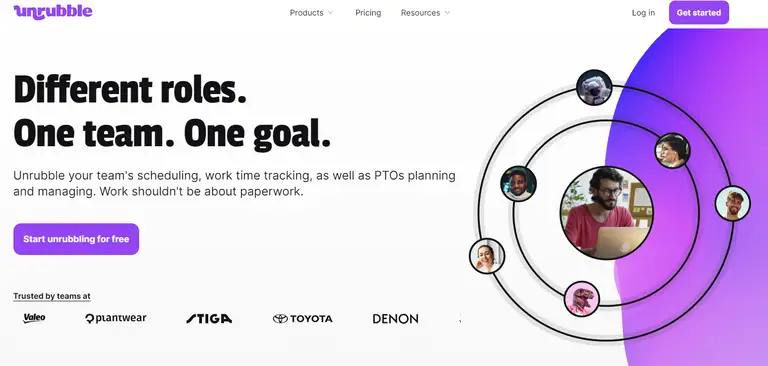For managers, overcoming uncertainty is key to fostering a productive and efficient working environment. Unfortunately, analysis paralysis, characterized by over-thinking and indecision, can effectively hinder decision-making.
That’s why in this guide, we will, among others, explore the impact of analysis paralysis on team performance and learn practical strategies to prevent it.
When Does Analysis Paralysis Happen: Understanding Definition and Characteristics
Analysis paralysis occurs when the decision-making process gets stuck, often due to the fear of making the wrong choice. It happens when employees overthink and overanalyze and, as a result, are unable to arrive at a conclusion or take action. This state can be caused by high-pressure situations, too many choices, or doubts about the future.
When trying to find the perfect solution, brain power gets depleted, leading to reduced working memory capacity and lower overall performance.
The Impact of Analysis Paralysis on Team Performance
This type of analysis can have several detrimental effects. First, it takes a toll on team productivity and efficiency.
It hinders progress due to:
- delaying important choices,
- making people overly reliant on others' opinions,
- or seeking more research without setting clear parameters.
When team members are stuck in this state, their mental energy is drained as they endlessly ponder over choices. They may fear making the wrong choice, leading to a cycle where analysis paralysis keeps happening. It is like a closed circle from which they cannot escape.
Moreover, individuals may become overly reliant on else's opinion, making it challenging to initiate a course of action independently and more likely to commit bad decisions. Overanalyzing and overthinking don’t bring any positive outcomes. On the contrary - it affects their self-confidence.
Also, the constant doubt and inability to make important decision lead to anxiety-producing situations and lower overall performance. Consequently, if your team experiences this, they will suffer lower well-being.
This phenomenon can be particularly detrimental in industries like software development or corporate strategy, where quick big decisions are vital, and the damage may be greater than you realize.

How to Identify Analysis Paralysis in Your Team
Thanks to pinpointing signs of such paralysis and having the right tools at your disposal, you can proactively empower your team to make confident choices and achieve optimal outcomes. So, to maintain team performance, you must recognize the source of the problem. But how?
Signs of Analysis Paralysis
Pay attention to certain behaviors. Among them can be distinguished:
Delayed Decision-Making
Analysis paralysis causes team members to delay decisions as they constantly review available options. Thus, they prevent action and miss opportunities for progress. So, if you saw noticeable delays, making it difficult to capitalize on favorable results, you should take a deeper look at your team’s behavior.
Overthinking
If employees can’t stop overthinking important tasks, it’s also a problem. This lead to decision fatigue and hinders their ability to make confident choices. Excessive conscious thought wastes time and energy that could be better utilized in the execution of tasks, resulting in a cycle of diminished focus and productivity.
Fear of Making Mistakes
Or maybe some individuals are afraid of making the wrong decision and experience a lack of confidence in the planning process? Unfortunately, this can prevent them from taking any action at all, so they will give up, unable to move forward. And yet there is much to be learned from mistakes.
Lack of Progress
And do you know what's happening with performance? Has it slowed down, and has there been no growth at all? Or you maybe see frustration and demotivation among team members whose efforts stalled? Analysis paralysis can also be the cause here.
Procrastination
In turn, the inability to make important decisions can lead to procrastination, which prevents team members from taking action. Sound familiar? So you probably know that this constant postponement leads to missed opportunities and also fosters a culture of inefficiency and underperformance.
Tools for Identifying Analysis Paralysis
You already know that spotting ineffective analysis in your team is vital for maintaining productivity.
Fortunately, various techniques can help you recognize and address this situation effectively.

The first of them is observation. Thanks to observing the above signs, such as delayed decision-making, overthinking, and fear of making mistakes, managers can pinpoint instances of decision paralysis and take proactive measures to prevent it. Utilizing different tools can provide insights into overcoming this challenge.
You can also conduct an experiment. Based on its results, managers can identify areas where this paralysis occurs. The data will also provide valuable insights into which techniques contribute to quicker and more confident choices and where mental processing is the slowest. This can result in finding the source of weakness.
To identify and stop analysis paralysis, you can also take advantage of different tools, like Unrubble - a powerful work time management software - that can complement these techniques and helps managers to recognize the problem.
Thanks to this, you will be aware of the underlying reasons why analysis paralysis makes team performance sluggish and, as a manager, will come up with wise and quick decisions. And considering the well-being of your teammates is crucial for achieving positive outcomes.
Strategies to Overcome Analysis Paralysis
To prevent analysis paralysis and facilitate making decisions, implementing targeted strategies is essential. Let's explore some of them.
Techniques for Addressing Analysis Paralysis
The basic idea is that these few simple techniques will allow employees to make bigger decisions with more confidence and ensure that the team gets back on track.
Prioritization
Train your team in effective task prioritization to ensure they focus on crucial decisions first. Understanding the importance of each task and how it impacts overall goals allows them to allocate their mental energy efficiently.
Decision-Making Frameworks
Introduce models to provide a structured approach to deciding. These frameworks help team members weigh the pros and cons systematically, reducing the likelihood of over-thinking and facilitating quicker and well-informed choices.
Encourage Action
In your business policy, foster a culture that values taking action over seeking a perfect solution. This embraces a bias toward action and empowers them to learn from mistakes and iterate quickly. Use action words, teach how to make a decision quickly, but don't decide for others. Even small decisions matter.
Set Realistic Deadlines
Establish clear timelines for tasks to prevent unnecessary delays. Having deadlines in place encourages your team to make timely choices, reducing the risk of getting stuck in a prolonged decision-making process.
Foster a Safe Environment
Create a psychologically safe space where team members feel comfortable sharing their ideas and thoughts without fear of judgment. Seeing mistakes as learning opportunities reduces analysis paralysis caused by fear or self-doubt. Therefore, it allows employees to engage in execution more confidently and enthusiastically.
Creating a Decision-Friendly Environment
Fostering an environment conducive to sound judgment is also key to overcoming this paralysis. Therefore, you should apply:
Open Communication
Encourage open and transparent communication within the team, where members feel comfortable sharing their thoughts and concerns. As a result of facilitating discussions, participants can collaboratively address challenges, avoid over-analyzing, and make well-informed decisions.
Collaborative Decision Making
Also, promote a culture of collective action, where input from diverse perspectives is valued. When people actively participate in deciding processes, they can leverage each other's strengths, utilize their working memory effectively, and jointly arrive at better solutions, reducing the likelihood of analysis paralysis.
Regular Training
Provide ongoing training on skills and techniques that will improve making a decision process and enhance the team's abilities. Training can equip staff with the tools to set clear research parameters, make conscious and confident choices, and tackle every big decision with increased efficiency.
Positive Atmosphere
Moreover, foster a positive and supportive work environment where failures are seen as an occasion for growth and not as a failure that needs to be corrected. When employees feel psychologically safe, they are more willing to take risks, break free from analysis paralysis, and make timely decisions.
Employee Engagement Activities
And the last, organize activities that boost employee morale and boost their confidence. Engaged personnel are more likely to be proactive leaders, as their higher levels of satisfaction and motivation lead to a reduction in decision-related stress.

How Time Management Will Overcome Analysis Paralysis
If you want to overcome analysis paralysis, you will also need to learn time management.
Time management is a powerful tool that can aid in breaking free from such paralysis and promoting effective planning. Here are some benefits which can help teams overcome the issue.
Improved Efficiency
Time management techniques, such as prioritizing tasks, setting deadlines, and minimizing distractions, can help individuals work more productively. Keep an eye on how much time is spent on critical decisions and avoid over-analyzing. This can really help in getting rid of analysis paralysis.
Better Project Management
Further, time management enables better planning and execution of tasks, reducing the likelihood of decision delays and ensuring that outcomes align with project schedules. This organized approach empowers teams to make proper decisions in a timely manner, keeping the project on track.
Employee Accountability
Encouraging time management fosters a sense of responsibility and accountability among employees as well. When employees are aware of their time constraints and deadlines, they are more likely to take ownership of their decisions, driving them to plan ahead.
Workload Balance
And, of course, time management practices aid in identifying overworked employees and redistributing tasks for a balanced workload. Make sure all team members are on the same page and have realistic timeframes for decision-making. Then, they can avoid feeling overwhelmed. 🧘
How Unrubble Can Help You Tackle Analysis Paralysis

A powerful work time management software can save your teams’ performance, and Unrubble is the best option for you.
Unrubble offers valuable features that can assist managers in overcoming analysis paralysis within their teams. With this platform, managers can optimize business processes and foster a more productive work environment. Let’s see how.
⭐ Employee Work Time Tracker
Unrubble's Work Time Tracker allows managers to monitor how much time team members spend on:
- work,
- overtime tasks,
- breaks,
- and more.
With tracking their time spent at work, managers can eliminate negative behaviors, help employees increase their productivity, identify instances of analysis paralysis, and intervene promptly.
⭐ Summary Work Time Overview
This option provides a clear summary of all work-related data, including staff working hours and breaks. So, no more time-consuming Excel tables. Whether you use real or balanced data, Unrubble automatically reduces overtime to accommodate lateness and early exits.
With clear comparisons between actual time records and planned work time, our tool helps you overcome analysis paralysis, thus streamlining decision-making. Aside from that, you'll have access to an easy-to-understand overtime and breaks summary. As a result, this tool offers the insights you need to tackle analysis paralysis and create a more productive work environment.
⭐ Employee Scheduling
Employee scheduling is also facilitated in Unrubble and plays a crucial role in overcoming analysis paralysis. As a result of properly planning and organizing work shifts and tasks, managers can ensure that team members have clear timelines and priorities.
A well-structured schedule minimizes the risk of decision delays caused due to overthinking or fear of making mistakes. With Unrubble's scheduling tool, managers can foster a decision-friendly environment where employees know their responsibilities, reducing the mental burden of decision-making and allowing for more confident and timely choices.
With Unrubble's features, managers can gain valuable insight into their team's planning processes, tackle analysis paralysis, and facilitate more proactive, confident decision-making.
So if you are wondering how to eliminate problems with making decisions in your team, bet on Unrubble today.
Key Takeaways
- Analysis paralysis affects team performance by slowing down performance, causing overreliance on others' opinions, and leading to a fear of making mistakes, and this ultimately drains mental energy and hinders progress.
- Prioritization, establishing frameworks, encouraging action, setting deadlines, and fostering a safe environment are valuable techniques to avoid analysis paralysis and promote confident action.
- Open communication, collaborative decision-making, regular training, a positive atmosphere, and employee engagement activities contribute to a supportive environment for effective management.
- Implementing time management techniques improves efficiency, project management, employee accountability, and workload balance, aiding in overcoming analysis paralysis.
- Unrubble provides the insights needed to tackle analysis paralysis and empower teams to make confident and timely choices, ultimately enhancing overall performance and efficiency.
Improve Mental Energy with Unrubble
Understanding and addressing analysis paralysis is crucial for maintaining team productivity and efficiency among managers. The key to creating a decision-friendly environment is to recognize the signs and apply targeted strategies. Thanks to them, your team can achieve sustained success and foster a supportive work culture.
Take advantage of Unrubble - work time management software, which will further enhance your team's ability to overcome analysis paralysis and achieve optimal outcomes.
Sign up for free, and don’t let your team waste time.
FAQ
What is analysis paralysis?
Analysis paralysis is a state of overthinking and indecision that hinders effective decision-making. It occurs when individuals become stuck in the process of analyzing options and fear making the wrong choice.
How can managers identify analysis paralysis in their teams?
Managers can identify analysis paralysis by observing signs such as delayed action, overthinking, fear of mistakes, lack of progress, and procrastination. They can also conduct experiments and use tools like Unrubble to gain insights into team decision-making processes.
How does time management help overcome analysis paralysis?
Time management improves efficiency, project management, employee accountability, and workload balance. Thanks to prioritizing tasks, setting deadlines, and minimizing distractions, team members can avoid overanalyzing and make quick decisions.
How can a decision-friendly environment be created?
A decision-friendly environment can be fostered through open communication, collaborative planning, regular training, promoting a positive atmosphere, and organizing employee engagement activities. Creating a psychologically safe space encourages confident and timely decision-making.








